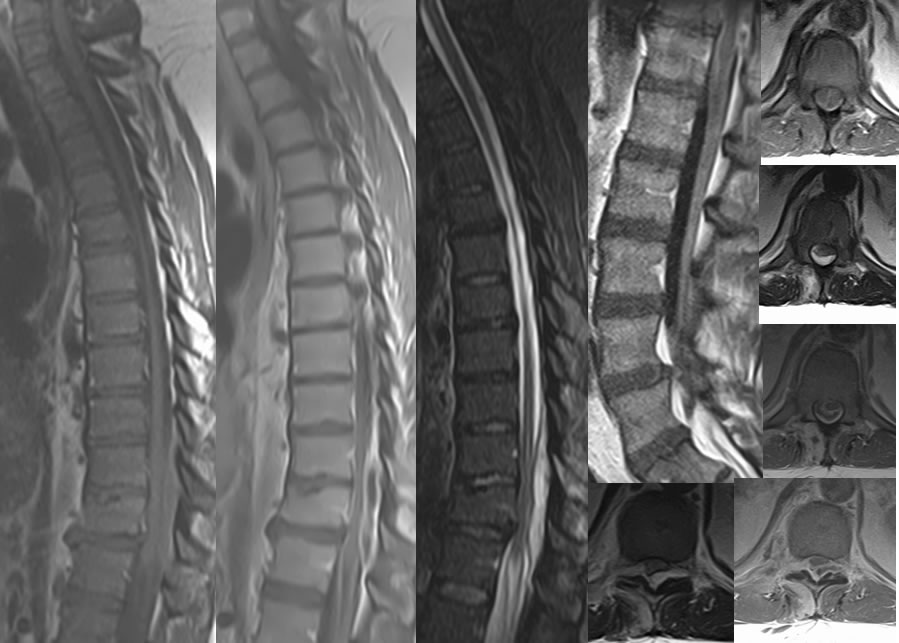

Thoracic epidural abscess with arachnoiditis
Findings:
Multiple MR images demonstrate an irregular peripherally enhancing fluid collection dorsally at the T12 level. The collection causes spinal cord compression. Distal to the epidural collection, the nerve roots of the cauda equina and the conus demonstrate diffuse enhancement.
Discussion:
Epidural abscess is most commonly dorsal at lower thoracic and lumbar levels (80%), but may be anterior if associated with spondylodiscitis. The most common organism is Staph aureus with TB next most common and fungal uncommon. IV drug abusers, immunocompromised, and other chronic illnesses (DM, CRF) predispose to formation of epidural abscess. Dorsal collections usually arise from an extraspinal source by hematogenous dissemination but may also arise from septic facet arthropathy or direct extension from paraspinal source. Poor prognosis is expected when there is severe thecal sac compression. Treatment with emergent decompression is usually indicated unless there are significant comorbidities, extensive craniocaudal involvement, or long standing paralysis. Essentially all patients are treated with first broad spectrum and then organism specific IV antibiotics for at least 6-8 weeks. While uncommon, direct involvement of the subarachnoid space may also occur as in this case with associated arachnoiditis.